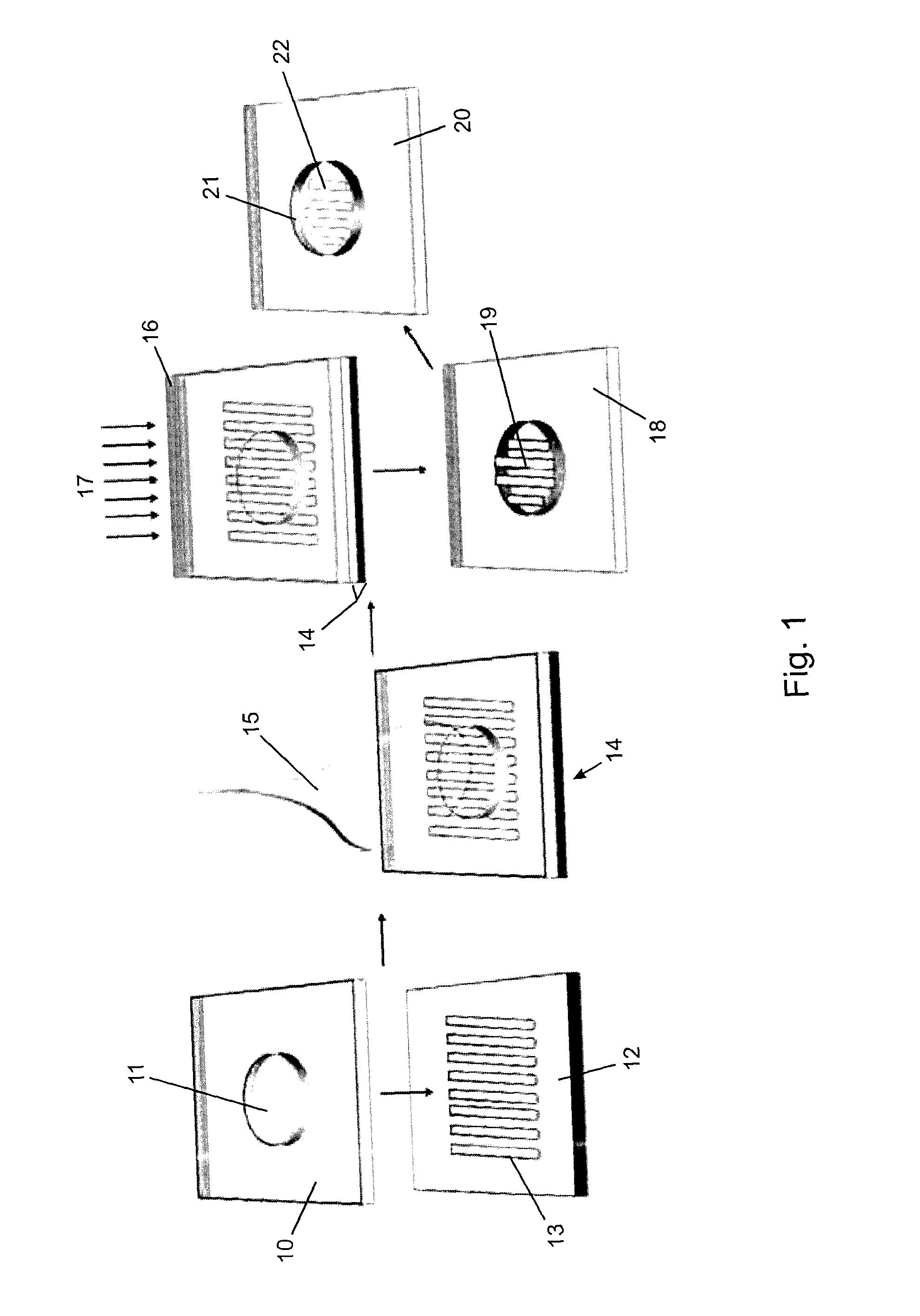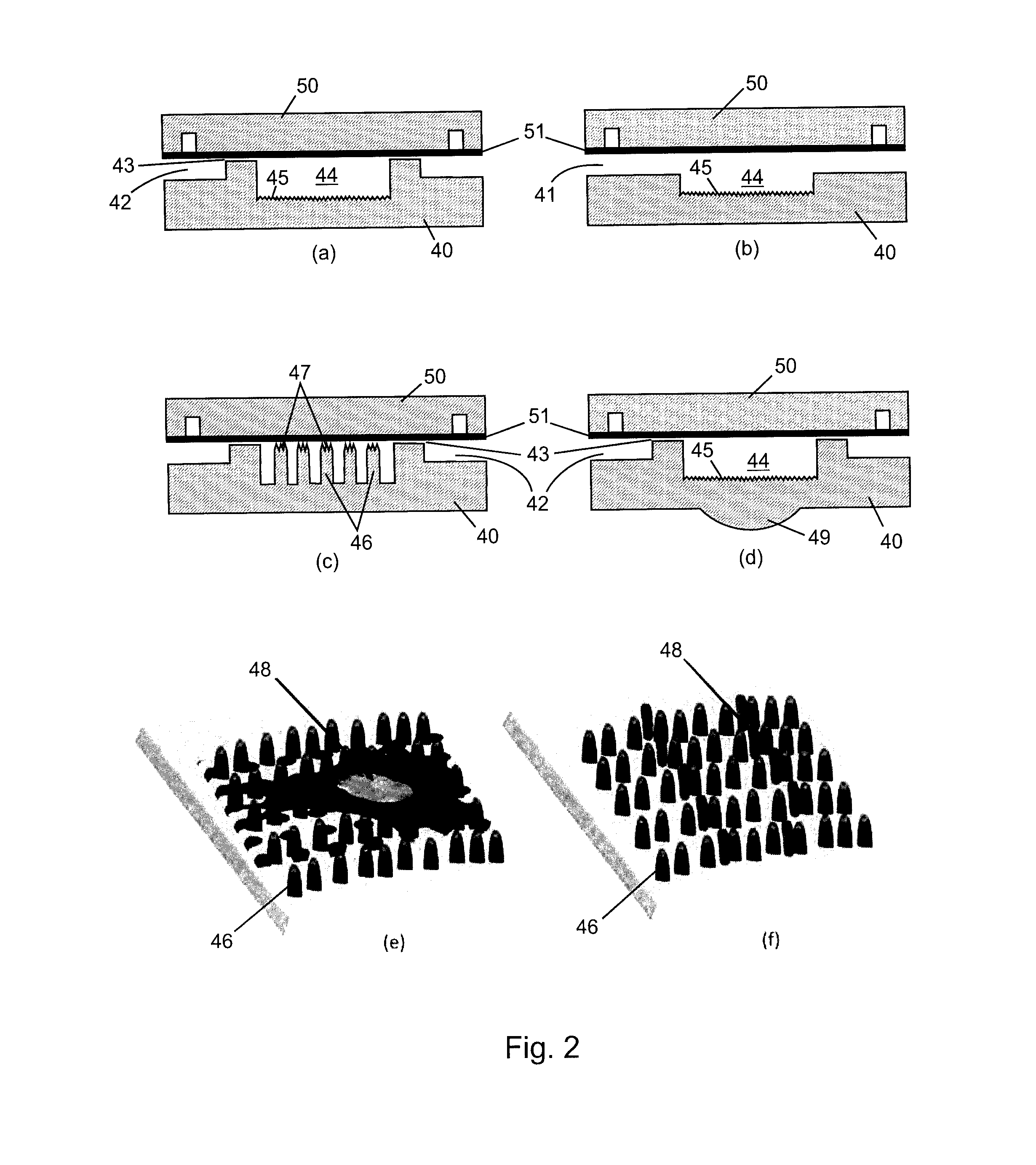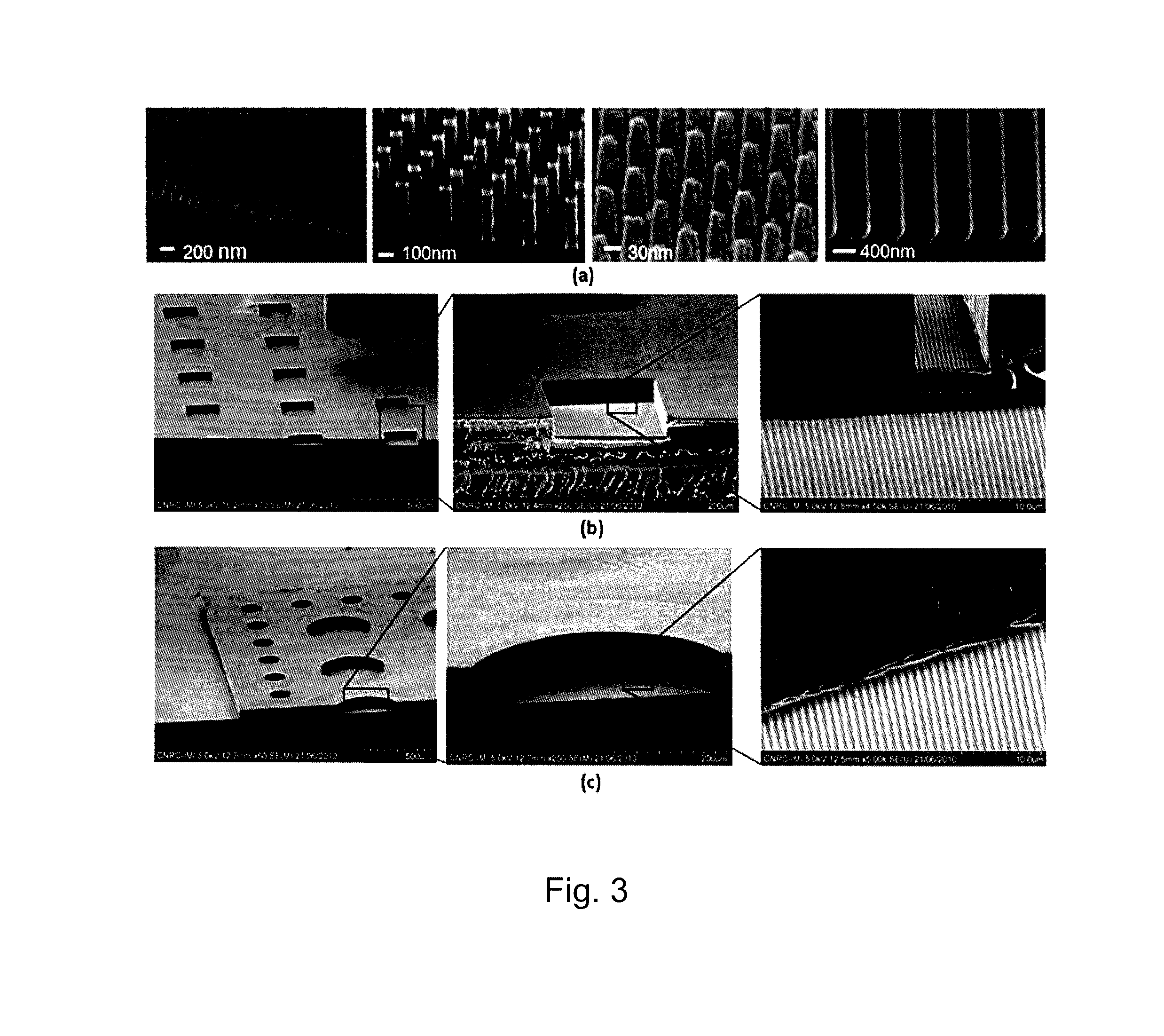Microfluidic System Having Monolithic Nanoplasmonic Structures
a microfluidic system and nanoplasmonic technology, applied in flexible pipes, dough embossing machines, material analysis, etc., can solve the problems of significant limitations, inability to quickly detect pathogens or cancers, and inability to meet the rapid pathogen or cancer detection requirements, etc., to achieve rapid low-cost mold fabrication, low volume consumption, and low cost
- Summary
- Abstract
- Description
- Claims
- Application Information
AI Technical Summary
Benefits of technology
Problems solved by technology
Method used
Image
Examples
example 1
Process for Fabricating a Monolithic Integrated Nanoplasmonic Microfluidic Cell Culture System
[0044]A monolithic integrated nanoplasmonic microfluidic cell culture system of the present invention may be produced generally as shown in FIG. 1, which illustrates the process showing a single cell chamber and none of the channels, conduits, valves or other microfluidic features for clarity. A soft thermoplastic elastomer film is hot-embossed to form micro-scale and meso-scale features (microchannels, conduits, chambers, etc.) in TPE membrane 10 including through-hole 11. This is performed at an applied pressure ranging from 5 kN to 15 kN, for 5-30 min, at a temperature in a range of from 100° C. to 160° C., depending on the desired features. Hard Zeonor™ substrate 12 is patterned by hot-embossing at an applied pressure of 10 kN to 20 kN for 10-30 min at a temperature ranging from 140° C. to 170° C. depending on the specific Zeonor™ grade to form a regular array of nano-scale grating elem...
example 2
Use of a Monolithic Integrated Nanoplasmonic Microfluidic Cell Culture System in Plasmonic Detection
[0048]In operation a monolithic integrated nanoplasmonic microfluidic cell culture system of the present invention employs pressure-driven flow to transport cells in suspension from a plurality of reservoirs through a plurality of cell-loading channels to a plurality of nanostructured cell culture chambers by closing valves of the perfusion channels and opening valves on the cell-loading channels. A plurality of cell-lines are loaded using a plurality of different reservoirs. Following initial cell attachment on the bottom of the nanostructured chambers, the valves on the cell-loading channels are closed, and fresh media is continuously injected in each of the perfusion channels. Multiple high resistance perfusion conduits ensure equal distribution of the media within the chamber while minimizing the shear-stress exerted on the cells.
[0049]Once the cell culture chambers are loaded wit...
PUM
| Property | Measurement | Unit |
|---|---|---|
| Fraction | aaaaa | aaaaa |
| Nanoscale particle size | aaaaa | aaaaa |
| Nanoscale particle size | aaaaa | aaaaa |
Abstract
Description
Claims
Application Information
 Login to View More
Login to View More - R&D
- Intellectual Property
- Life Sciences
- Materials
- Tech Scout
- Unparalleled Data Quality
- Higher Quality Content
- 60% Fewer Hallucinations
Browse by: Latest US Patents, China's latest patents, Technical Efficacy Thesaurus, Application Domain, Technology Topic, Popular Technical Reports.
© 2025 PatSnap. All rights reserved.Legal|Privacy policy|Modern Slavery Act Transparency Statement|Sitemap|About US| Contact US: help@patsnap.com



